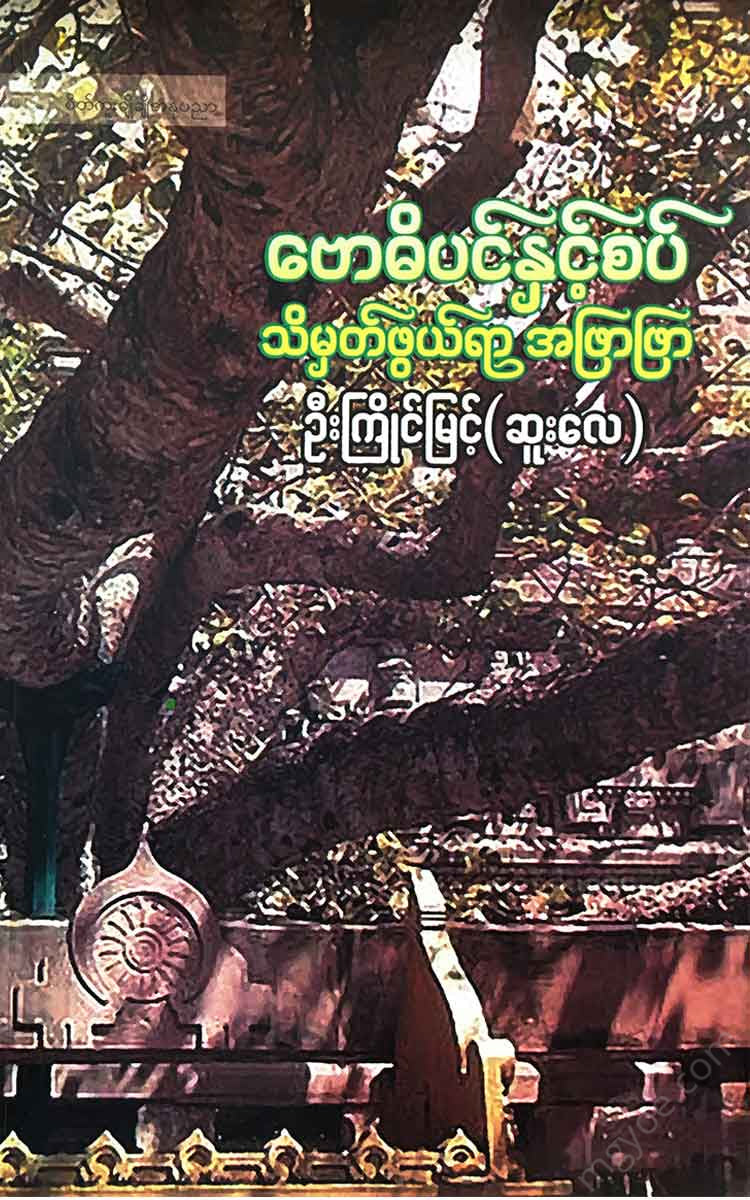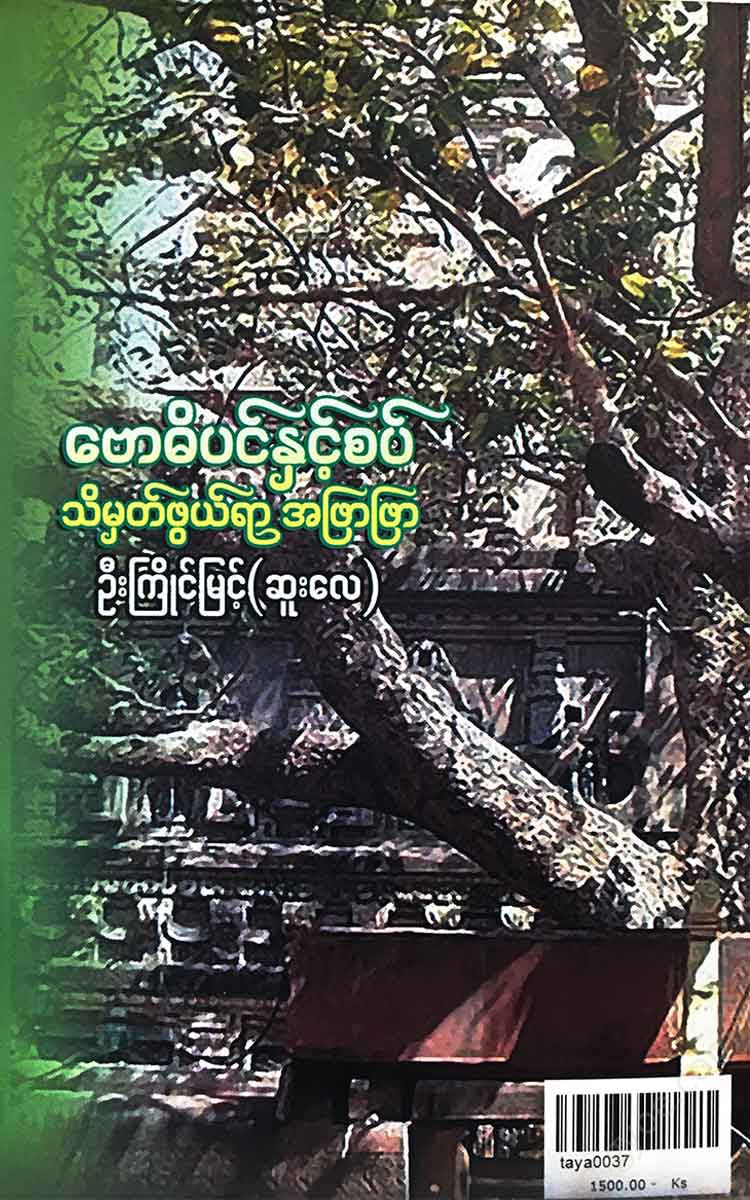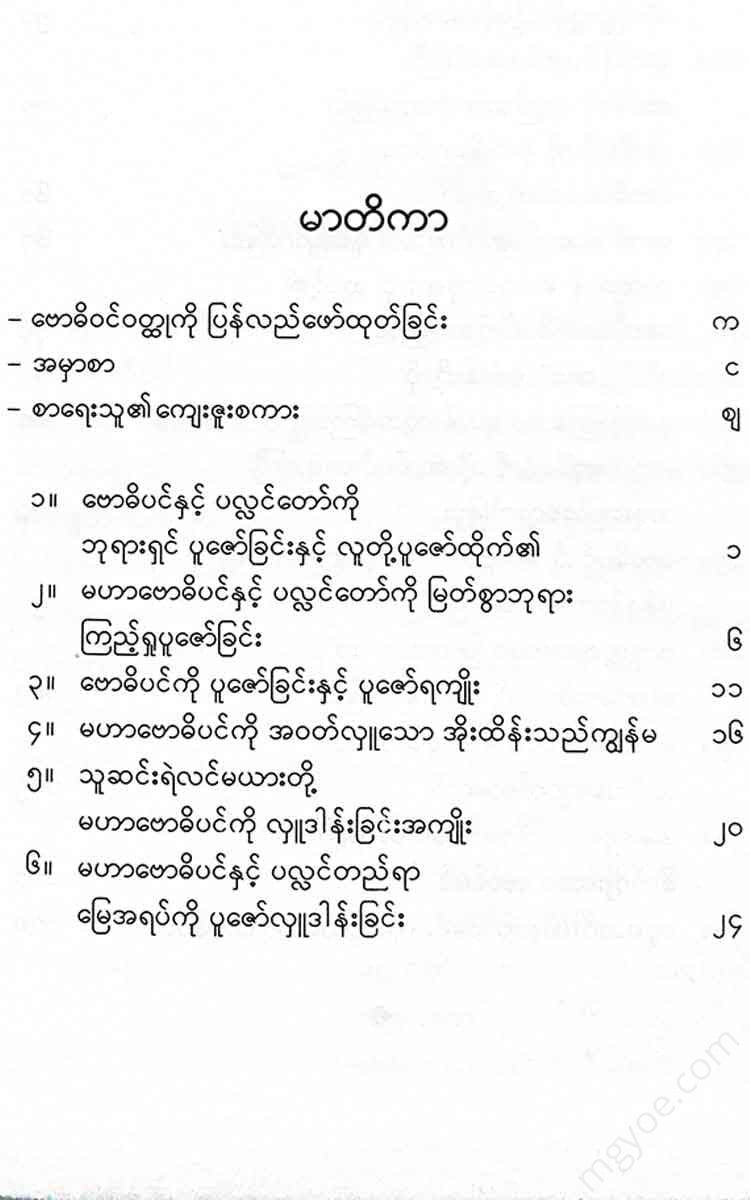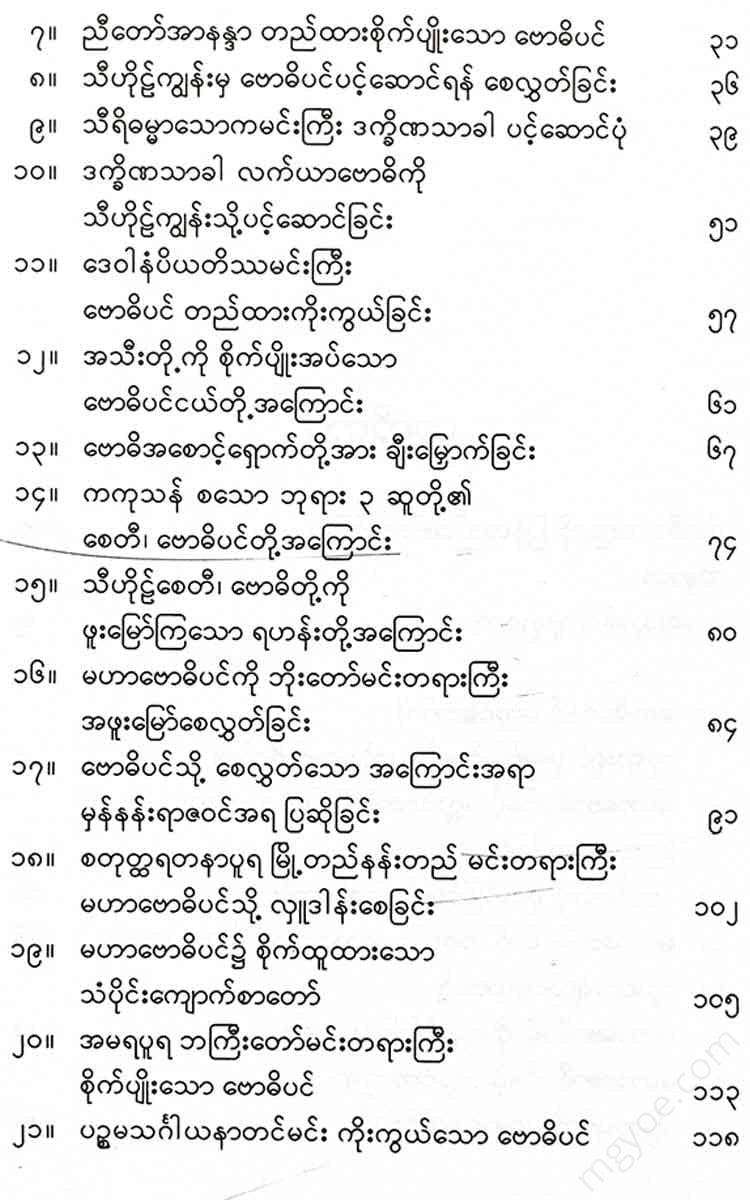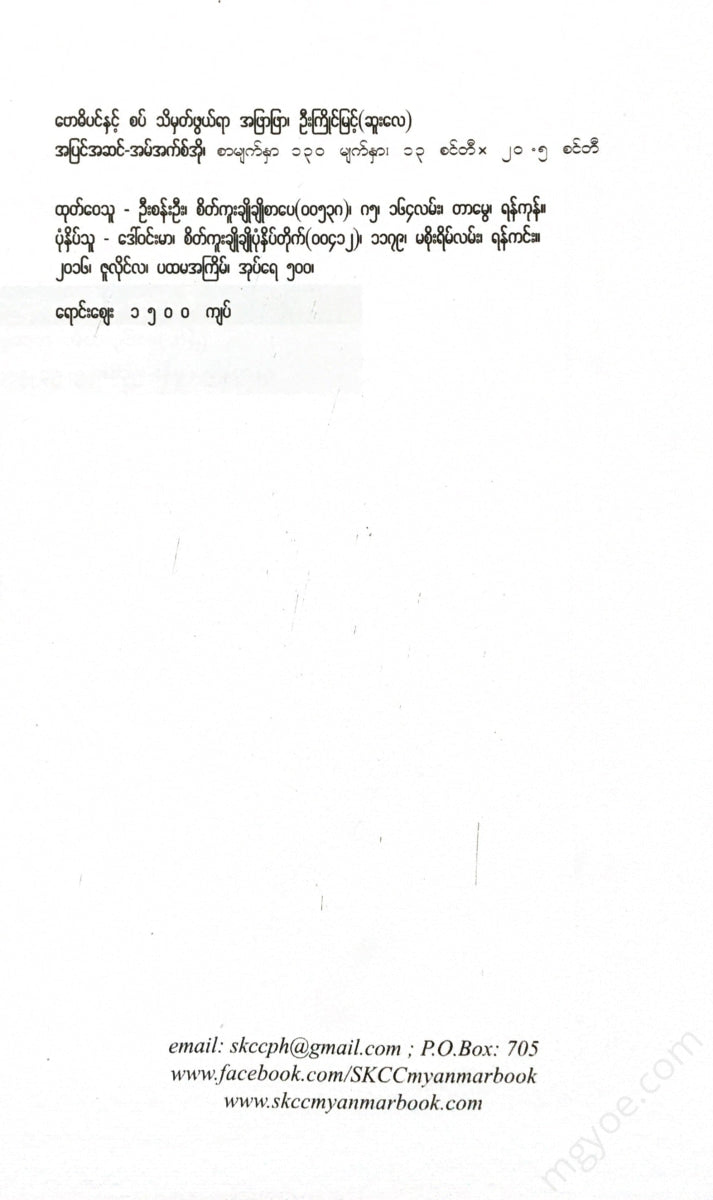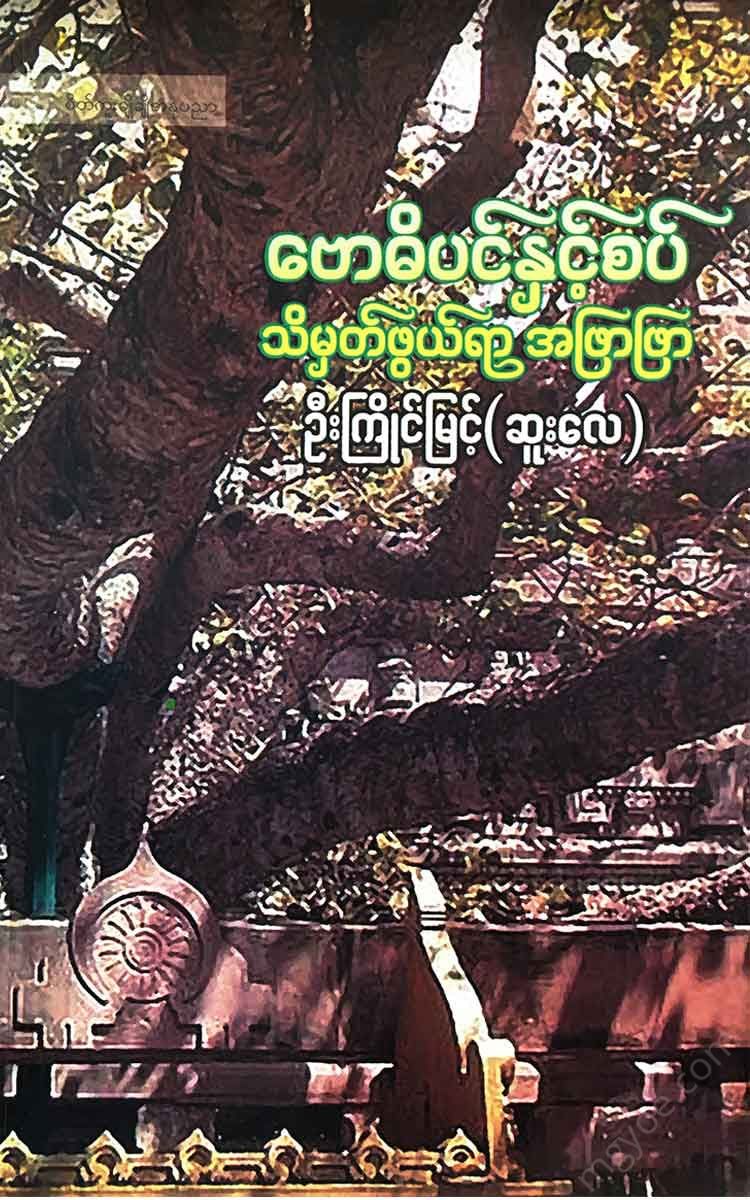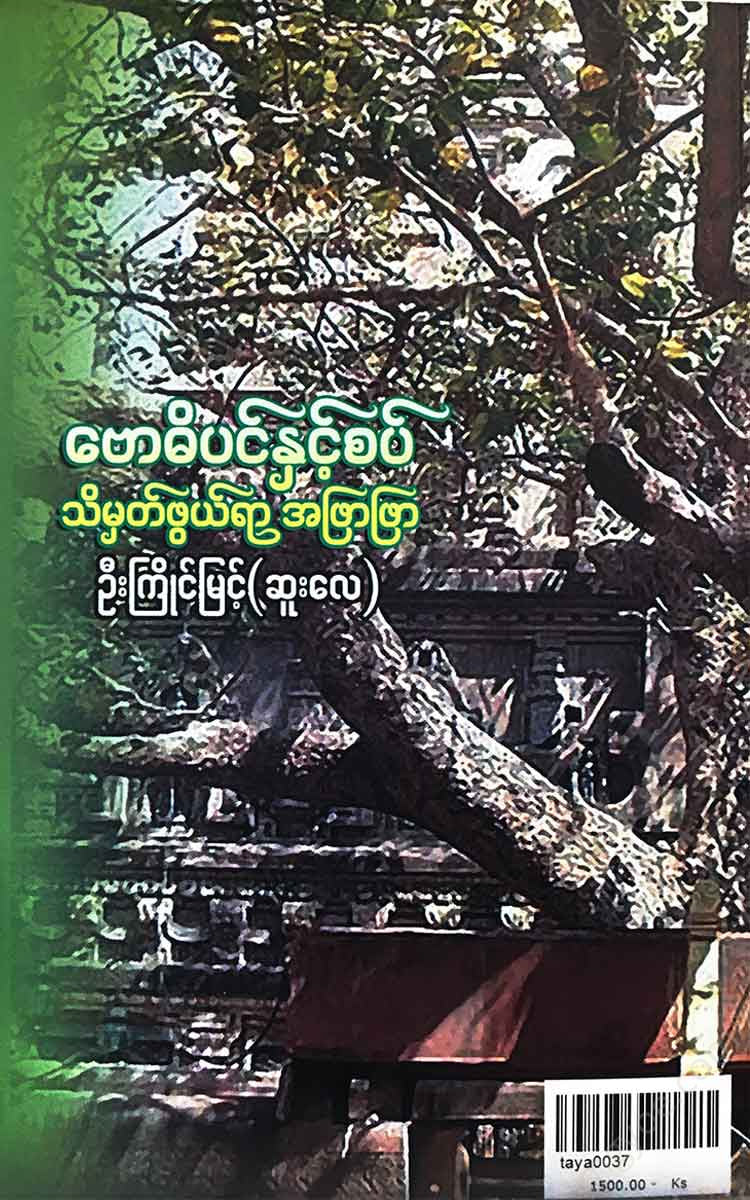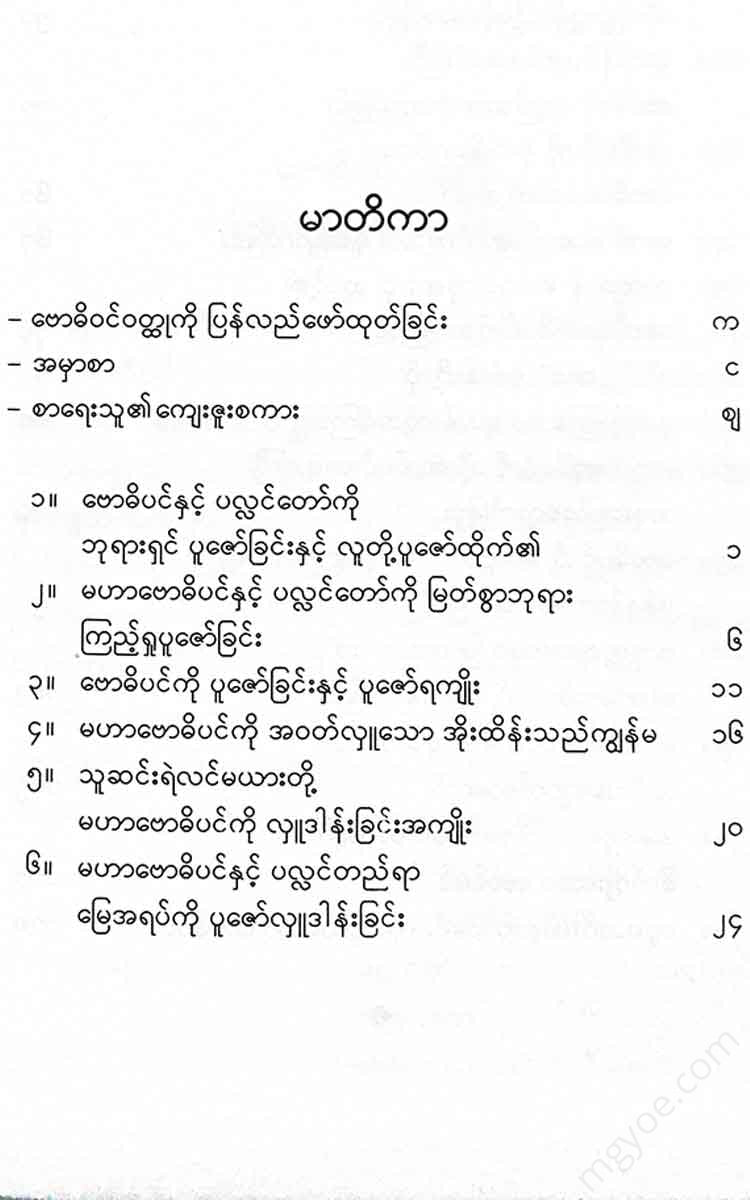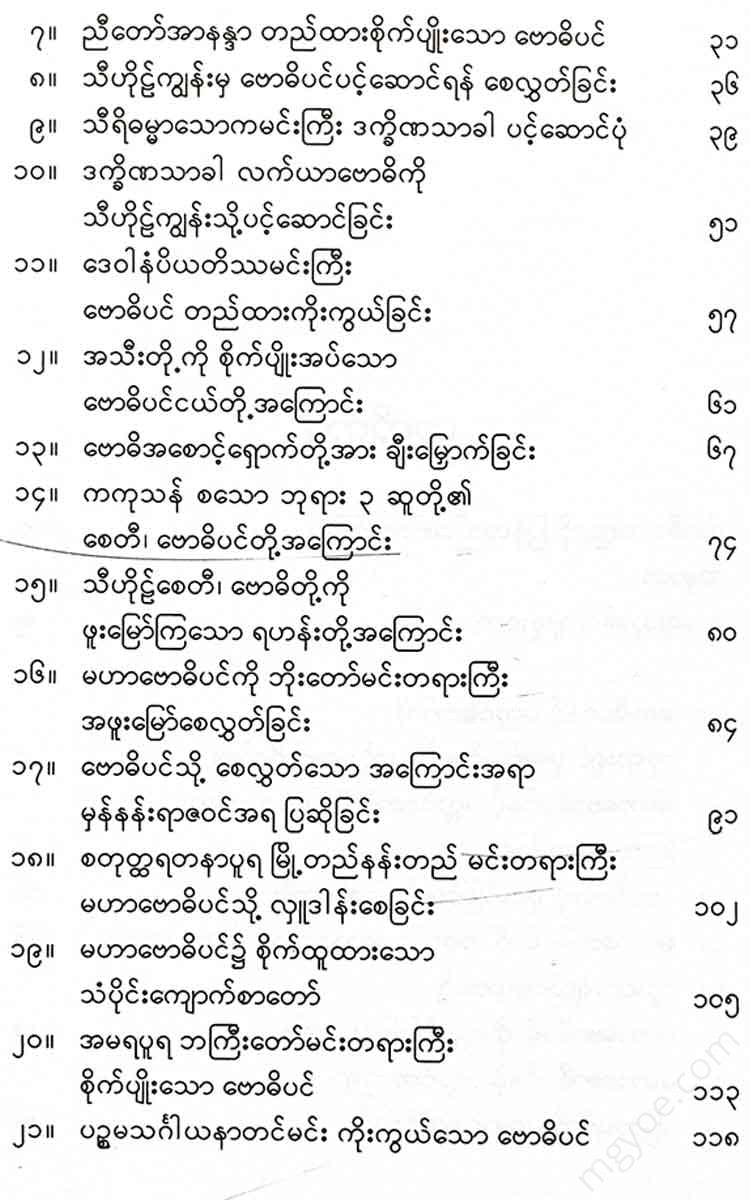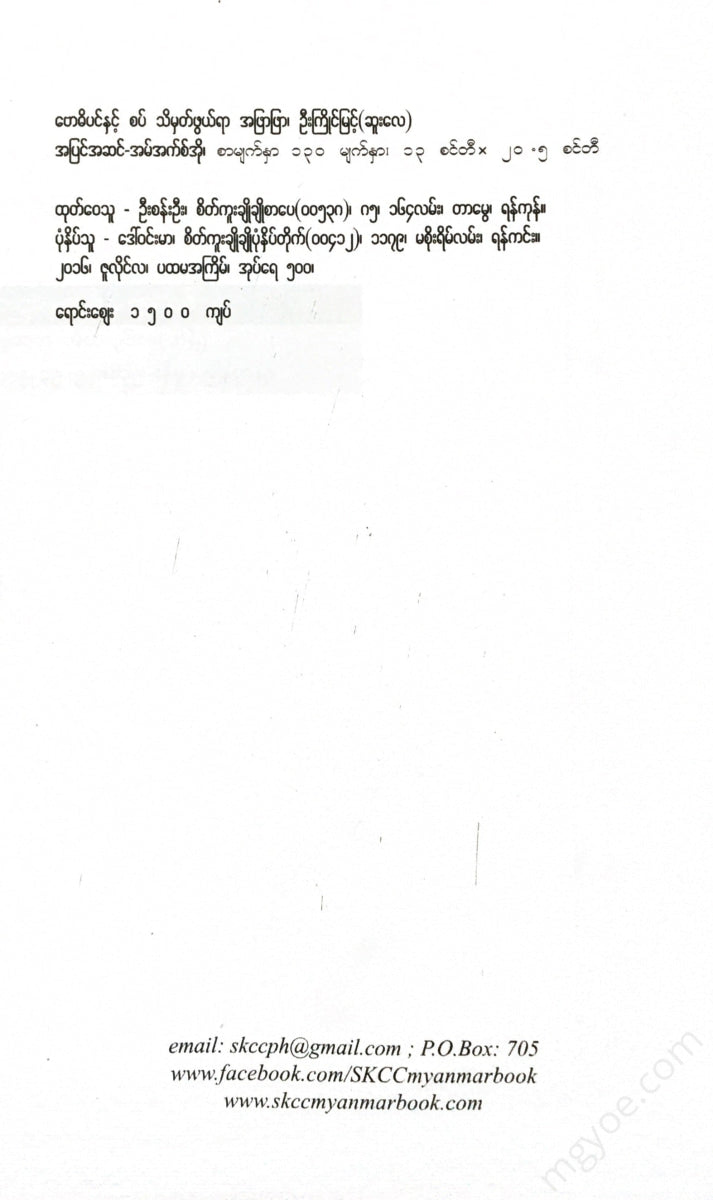စိတ်ကူးချိုချိုစာပေ
U Kyaing Myint (Sule) - Interesting facts about the Bodhi tree
U Kyaing Myint (Sule) - Interesting facts about the Bodhi tree
Couldn't load pickup availability
The Bodhi tree and the throne are worthy of offerings by the Buddha and by people.
The Bodhi tree is the tree where the Buddhas realized the Four Noble Truths. The Sakyu tree, the tree where the Buddha realized the Four Noble Truths, was the Bodhi tree of Vipassi Buddha. For Sikhi Buddha, the white mango tree was the Bodhi tree. For Vessabhu Buddha, the sycamore tree was the Bodhi tree. Among the Buddhas who have blossomed in this Buddha world, Kakusana Buddha realized the Four Noble Truths under a kukko tree. The kukko tree was Kakusana Buddha's Bodhi tree. Similarly, for Konagam Buddha, it was a water sycamore tree, for Kassapa Buddha, it was a sycamore tree, and for Gautama Buddha, it was a sycamore tree.
The Buddha Gautama realized the Four Noble Truths under a banyan tree in Bodh Gaya, India. The banyan tree became the Bodhi tree. This banyan tree is called the “Great Bodhi Tree.” The banyan tree planted by Anantapinda in the Jetavana monastery in Savatthi was ordered by the Venerable Ananda and is called the “ Ananda Bodhi Tree.” Similarly, the banyan tree in Anuradhapura, Sri Lanka, was brought from India by the monk Sanghamitta and is called the “Sanghamitta Bodhi Tree.” Thus, it is noted that there are three types of banyan trees. The banyan trees that grow from these three banyan trees are also called Bodhi trees.
The Bodhi tree is considered the "tree of birth" of the Buddha because it grew in the Bodhisattva region on the same day as the full moon of the Kason month in the year 68 of the Maha Sakkaraj era, when the Bodhisattva Siddhartha was born.
The Bodhisattva Siddhartha, on the evening of the full moon of the month of Kason in the year 103 of the Maha Sakkaraj era, was sitting on the throne of the Aparajita under the Mahabodhi tree, and with the power of the ten perfections, he defeated the son of Mara. At dawn, with the knowledge of the original arahantship, he renounced all defilements and unwholesome deeds and attained Buddhahood. Thus, Mahabodhi
The Bodhi tree is also known as the "tree of victory." In the second Sattaha (Animisatha Sattaha), the Buddha stood and gazed at the Bodhi tree with unblinking eyes for seven days, making offerings. Therefore, the Bodhi tree is considered the "greatest king of trees " among all trees.
Thus, the Buddha, having attained the supreme power of omniscience and wisdom, which he had attained through the efforts of four hundred thousand eons and one hundred thousand worlds, gazed with unblinking eyes at the golden throne and the Bodhi tree, which were the most certain places to attain them, and spent seven days there. Therefore, this place is called the Animita Dhara . It is also called the Animita Pagoda .
Thus, as is confirmed in the great scriptures and scriptures such as the Atthasalini Atthakatha, the Vinaya Mahava Atthakatha, the Bodhivinaya Sakha, and others, after standing on the throne and the Great Bodhi Tree with unblinking eyes for seven days, the incomparable Buddha himself, having consulted with them, asked them to pay homage to him, and all beings, including humans, devas, and Brahmas, bowed down and paid homage to him. How can there be any doubt that he is worthy of homage? Indeed, he is truly worthy of homage.
The Blessed One, having seen and offered this offering, gave the following final instruction : "Just as I have offered, so should all good people who desire the highest worldly, material, and material wealth, also offer the Dhamma, which is as brilliant as the ruby jewel obtained by the gods, with the Dhamma as their guide, and the Dhamma as their guide."
The three-headed omniscient Buddha, who is the head of the earth, the center of the island, the world, the world, the great, the eighteen kings, the province of the valley, the Bodhi tree, the earth, the four branches, the hundred-ton mountain, the height of the clouds Having thought, "I myself have come to know," he, having attained the peak of the perfections which he had cultivated for four hundred thousand worlds and a hundred thousand worlds, having attained the incomparable and supreme power of bliss, having attained the peak of the four-fold power, the ten-fold power, the ten-fold power of wisdom
The Buddha, the teacher of humans, gods, Brahmas, and beings, spent seven days in the Bodhi tree and the golden throne. He stood not far from the northeast of the Bodhi tree and said, “In this Bodhi tree and the golden throne, you have clearly discerned the four noble truths. You have attained the highest level of omniscience.” He gazed at it with unblinking eyes. When he looked at it in this way, many gods became doubtful and doubtful.
What happened was that the Buddha, Gautama, was still desirous of the Bodhi tree and the golden throne, and so he looked at it with his unblinking eyes, and they doubted and doubted. Then, on the eighth day after the end of the seven days of the Animisa Sattaha, the Blessed One, with his omniscient golden wisdom, knew the intentions of the gods, and in order to dispel the doubts of the gods, he ascended to the upper heavens and showed them the vast and vast powers of water and fire, and dispelled the evil doubts of all the gods.
Those who plant and offer the Mahabodhi tree, which is endowed with such qualities, can attain the merit of becoming the Sakyavataya king 64 times, the Sindhara king 30 times, and the arahantship during the time of the Buddha Gotama, without having to leave the 92 worlds like the Venerable Asanabodhisattva. Those who pour water on the tree can attain the merit of becoming the arahantship like the Venerable Gambaudakiyama, without having to suffer from illness, anxiety, or the effects of the world of suffering.
Therefore, in the same way that the Bodhi tree and the throne were offered to the Buddha, the monks, the Sangha, and the common people should plant and offer the Bodhi tree (with offerings of water).
